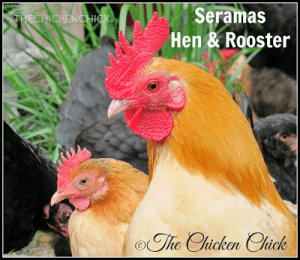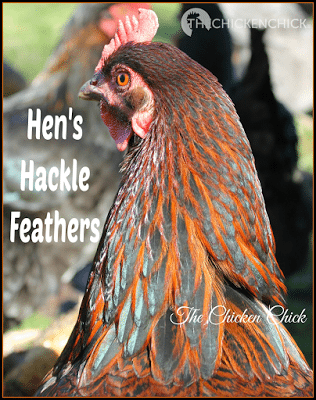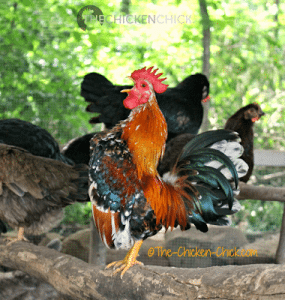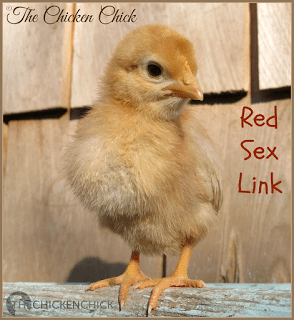Are you wondering how to tell the sex of your chicks or slightly older chickens? The question of gender is important to many chicken keepers for a variety of reasons, most commonly because roosters are either not allowed in the neighborhood or not needed in a backyard flock. In this article, we’ll look at a variety of chicken sexing methods that make it possible to determine the gender of chickens at various ages. I hope this article helps you learn to distinguish male chicks from female chicks, cockerels from pullets and roosters from hens.  Throughout this discussion, please bear in mind the obvious: there are only two possible outcomes of any sexing technique: male or female, so the probability of any sexing technique, trick or method being correct is always 50-50. So, while you may read or hear claims about various methods that “always work for me,” ANY method has a shot at being right half the time. Better to flip a coin than to invest much credence in most of the old wives’ tales.
Throughout this discussion, please bear in mind the obvious: there are only two possible outcomes of any sexing technique: male or female, so the probability of any sexing technique, trick or method being correct is always 50-50. So, while you may read or hear claims about various methods that “always work for me,” ANY method has a shot at being right half the time. Better to flip a coin than to invest much credence in most of the old wives’ tales. 

When purchasing chickens from a hatchery or feed store, remember that even chicks being sold as female (aka: sexed, pullets) risk being male. Even the most reliable sexing methods used by commercial poultry operations have a margin of error and sometimes chicks get mixed up in the bins at the feed store. The take-home message? Always have a plan for roosters if you cannot keep them. Some methods of sexing chickens should be left to trained professionals, some methods can be used only in specific circumstances and others are just as accurate as guessing the outcome of a coin toss at the start of a football game. Most sexing methods are NOT useful to the casual backyard chicken keeper, so I will touch on them briefly while supplying links for further reading and more information about those methods.

VENT SEXING: LEAVE IT TO THE PROS!
VENT SEXING (aka: Cloacal Sexing or Cloacal Inspection)
How does it work? Large commercial hatcheries hire highly trained and experienced, professional vent sexers to visually inspect the sex organs inside a day old chick’s vent and sort them into male and female bins. After sorting, chicks are referred to as “sexed.” Chicks that have not been sorted by gender are referred to as “straight run.”
The differences between newly hatched male and female chicks’ sex organs is extremely subtle, so subtle that even professional vent sexers are only 90-95% accurate.
Vent sexing sounds and appears very straightforward, but it is a true art form, which should not be attempted by backyard chicken keepers. When improperly performed, day old chicks are at risk of disembowelment and death. Amateurs are not likely to read the anatomy with any degree of accuracy greater than a coin toss anyway, so please stick with the coin toss at home.

White bantam Cochin chicks Female with frizzled feathers on left. Male on right.
VISIBLE GENDER DIFFERENCES
Observing secondary sex characteristics is the method the vast majority of us rely upon to make early gender predictions in our backyard flocks. By three weeks of age, it is usually possible to begin distinguishing physical features that point to a chicken’s gender. I find it enormously helpful to have several birds of the same age and breed to compare to each other. Here are some of the features to observe when trying to determine the sex of your chicken:
Comb and wattle size: In general, male chicks will begin to develop larger, more prominent, darker combs earlier than females.


Hackle feathers:
Hackle feathers grow around a chicken’s neck and begin to appear as a chicken approaches sexual maturity, around 4-6 months old. A rooster’s hackle feathers are long and pointy, a hen’s hackle feathers are shorter and more round.


Saddle feathers:
Saddle feathers grow on roosters where you might expect if he were a horse: on its back, towards its tail.
Size of legs and feet:
Males tend to have longer, thicker legs and bigger feet than female chickens.
Tail Feathers:
Males of most breeds have long, fancy tail feathers referred to as sickles. The main sickle feathers are the longest, curvy feathers at the top of his tail. The lesser sickle feathers are the curvy feathers that line both sides of his tail beneath the main sickles.

Black Copper Marans rooster

Black Copper Marans hen
Crowing:
While crowing does not ordinarily begin in cockerels until they are approaching sexual maturity, the timing varies by breed and individuals within a breed. The youngest cockerel to begin crowing in my flock was a mere three weeks old!

If you have never heard the first attempts at crowing by a cockerel, you simply MUST listen to The Crow of Baby Brutus.
Posture:
I find the posture of chicks can be very telling at an early age in some birds. Males have a distinctive upright, jaunty, cocky, if you will, stance when surprised or alerted to something.
Attitude:
Cockerels can tip themselves off by behaving more assertively or aggressively than pullets at a very young age. That is not to say that pullets cannot be assertive or aggressive, they can. This is just another factor to put into the equation when adding up the physical signs.

Submissive squat:
The submissive squat is the posture I refer to when a chicken crouches down, spreads its wings to the side for balance and lowers its tail. This is the stance a hen assumes when they have reached sexual maturity and are approached by a rooster for mating. If you haven’t identified your chicken as a pullet by the age of five months or so, the submissive squat is a sure sign that your chicken is female and is going to lay an egg within a week or so!
SEXING METHODS THAT ONLY WORK IN SPECIFIC CASES
At the risk of mortifying geneticists everywhere, gross oversimplifications follow. SEX LINKED GENDER DETERMINATION A sex-linked chicken is one whose gender can be determined by its appearance shortly after hatching either by down color or the growth rate of certain wing feathers. COLOR SEXINGHow does it work? The gender of certain chicks can be sexed by the color of their down at hatch.
Color Sexing Purebreds
A purebred example of a color sex link is the Barred Plymouth Rock. BPR chicks can be sexed at hatch based on the size and shape of a light-colored spot on the top of their heads. Males have a large white spot while females have a smaller, lighter, more narrow spot. Overall, Barred Rock males are lighter in color than females. This method is considered ~80% accurate.
Color Sexing Hybrids
Black Sex Linked chicks are produced by crossing a barred hen (such as a Barred Plymouth Rock) with a non-barred rooster. The male offspring will feather out like their mother, and the female offspring will be a solid color, typically black. This method is the only sure thing. If you cannot have roosters, order sex linked chicks.
Red Sex Linked chicks can be produced by crossing a variety of different breeds. “The most common commercial cross uses a silver female (such as a light Sussex) and a gold male (such as a Rhode Island Red). The female offspring are gold and the males are silver.”
WING FEATHER SEXING
**This method is ONLY accurate IF you know that the chick’s father was a fast-feathering breed AND the mother was a slow-feathering breed AND the feathers are observed by day 3 after hatch.**
How does it work? If you know that a chick’s father was a fast-feathering breed AND the mother was a slow-feathering breed, feather-sexing can reveal the gender of newly hatched hybrid chicks by the appearance of its wing feathers. This method must be employed within the first three days after hatching.
“The difference in the length of the primary and covert wing feathers can be seen between one and three days after hatching.After this age, however, it is not possible to use this sex-link cross for sexing chickens. When slow-feathering females are crossed with fast-feathering males, the male offspring are slow-feathering like their mother, and the female offspring are fast-feathering like their fathers.”

DNA TESTING
How does it work? For approximately $25.00, anyone can have a lab perform a DNA analysis of a chick’s down, feathers, eggshell after hatch or blood, which will accurately reveal gender.
OLD WIVES TALES
These are NOT Accurate Methods for Chick Sexing
Every accurate, cost-effective method of determining gender at the earliest possible moment is already in use by commercial hatcheries. Commercial hatcheries and breeders lose money when they hatch male chicks, so it is in their financial interest to employ accurate sexing methods. So any time someone suggests a fail-proof, do-it-yourself method of chick sexing, ask yourself whether commercial hatcheries are using it. If not, you can be quite certain it is either not accurate, not cost-effective or just plain silly.
Egg shape
What’s the claim? Pointy eggs=female, rounded eggs=male. Grab yourself a coin and toss away, folks! It is not accurate Needle &Thread or Ring on a StringWhat’s the claim? When dangled over a baby chick moves spontaneously back and forth=male, in a circular movement=female. It is not accurate.
Holding Upside Down (PLEASE DON’T DO THIS!)
What’s the Claim? When held upside down, males will struggle to right themselves, females will not. Total nonsense. It is not accurate.
Hold by Neck with 2 Fingers (PLEASE DON’T DO THIS!)
What’s the Claim? If you pick a chick up with two fingers by its neck, a female will draw its legs up to its body, a male’s legs will dangle. It is not accurate.

SCIENTIFIC BREAKTHROUGH!
Dr. Maria-Elisabeth Krautwald-Junghanns, a professor at the University of Leipzig, received an award for her breakthrough discovery of a method to determine the gender of chickens within the eggshell as early as day 3 of incubation, at which point the embryo does not feel pain. With the use of laser technology, a microscopic hole is made in the eggshell and the resulting light pattern is then examined and interpreted by scientists. The hole is sealed and the male eggs can then be used for other purposes such as in animal feeds. The technology is projected to be ready for use by 2017.
Sources & further reading
Sexing Day Old Chicks
Chick Sexers, website dedicated to preserving the Rich History of Chicken Sexers in the US
Sexing Chicks in the Backyard FlockSexing Day-Old Chicks on Small and Backyard Flocks
Storey’s Guide to Raising Chickens Sex-Linked Information
Honors for scientists at the University of Leipzig
Breakthrough
The Use and Euthanasia Procedures of Chicken/Avian Embryos
Kathy Shea Mormino
Affectionately known internationally as The Chicken Chick®, Kathy Shea Mormino shares a fun-loving, informative style to raising backyard chickens. …Read on


shop my SPONSORS
Are you wondering how to tell the sex of your chicks or slightly older chickens? The question of gender is important to many chicken keepers for a variety of reasons, most commonly because roosters are either not allowed in the neighborhood or not needed in a backyard flock. In this article, we’ll look at a variety of chicken sexing methods that make it possible to determine the gender of chickens at various ages. I hope this article helps you learn to distinguish male chicks from female chicks, cockerels from pullets and roosters from hens.  Throughout this discussion, please bear in mind the obvious: there are only two possible outcomes of any sexing technique: male or female, so the probability of any sexing technique, trick or method being correct is always 50-50. So, while you may read or hear claims about various methods that “always work for me,” ANY method has a shot at being right half the time. Better to flip a coin than to invest much credence in most of the old wives’ tales.
Throughout this discussion, please bear in mind the obvious: there are only two possible outcomes of any sexing technique: male or female, so the probability of any sexing technique, trick or method being correct is always 50-50. So, while you may read or hear claims about various methods that “always work for me,” ANY method has a shot at being right half the time. Better to flip a coin than to invest much credence in most of the old wives’ tales. 

When purchasing chickens from a hatchery or feed store, remember that even chicks being sold as female (aka: sexed, pullets) risk being male. Even the most reliable sexing methods used by commercial poultry operations have a margin of error and sometimes chicks get mixed up in the bins at the feed store. The take-home message? Always have a plan for roosters if you cannot keep them. Some methods of sexing chickens should be left to trained professionals, some methods can be used only in specific circumstances and others are just as accurate as guessing the outcome of a coin toss at the start of a football game. Most sexing methods are NOT useful to the casual backyard chicken keeper, so I will touch on them briefly while supplying links for further reading and more information about those methods.

VENT SEXING: LEAVE IT TO THE PROS!
VENT SEXING (aka: Cloacal Sexing or Cloacal Inspection)
How does it work? Large commercial hatcheries hire highly trained and experienced, professional vent sexers to visually inspect the sex organs inside a day old chick’s vent and sort them into male and female bins. After sorting, chicks are referred to as “sexed.” Chicks that have not been sorted by gender are referred to as “straight run.”
The differences between newly hatched male and female chicks’ sex organs is extremely subtle, so subtle that even professional vent sexers are only 90-95% accurate.
Vent sexing sounds and appears very straightforward, but it is a true art form, which should not be attempted by backyard chicken keepers. When improperly performed, day old chicks are at risk of disembowelment and death. Amateurs are not likely to read the anatomy with any degree of accuracy greater than a coin toss anyway, so please stick with the coin toss at home.

White bantam Cochin chicks Female with frizzled feathers on left. Male on right.
VISIBLE GENDER DIFFERENCES
Observing secondary sex characteristics is the method the vast majority of us rely upon to make early gender predictions in our backyard flocks. By three weeks of age, it is usually possible to begin distinguishing physical features that point to a chicken’s gender. I find it enormously helpful to have several birds of the same age and breed to compare to each other. Here are some of the features to observe when trying to determine the sex of your chicken:
Comb and wattle size: In general, male chicks will begin to develop larger, more prominent, darker combs earlier than females.


Hackle feathers:
Hackle feathers grow around a chicken’s neck and begin to appear as a chicken approaches sexual maturity, around 4-6 months old. A rooster’s hackle feathers are long and pointy, a hen’s hackle feathers are shorter and more round.


Saddle feathers:
Saddle feathers grow on roosters where you might expect if he were a horse: on its back, towards its tail.
Size of legs and feet:
Males tend to have longer, thicker legs and bigger feet than female chickens.
Tail Feathers:
Males of most breeds have long, fancy tail feathers referred to as sickles. The main sickle feathers are the longest, curvy feathers at the top of his tail. The lesser sickle feathers are the curvy feathers that line both sides of his tail beneath the main sickles.

Black Copper Marans rooster

Black Copper Marans hen
Crowing:
While crowing does not ordinarily begin in cockerels until they are approaching sexual maturity, the timing varies by breed and individuals within a breed. The youngest cockerel to begin crowing in my flock was a mere three weeks old!

If you have never heard the first attempts at crowing by a cockerel, you simply MUST listen to The Crow of Baby Brutus.
Posture:
I find the posture of chicks can be very telling at an early age in some birds. Males have a distinctive upright, jaunty, cocky, if you will, stance when surprised or alerted to something.
Attitude:
Cockerels can tip themselves off by behaving more assertively or aggressively than pullets at a very young age. That is not to say that pullets cannot be assertive or aggressive, they can. This is just another factor to put into the equation when adding up the physical signs.

Submissive squat:
The submissive squat is the posture I refer to when a chicken crouches down, spreads its wings to the side for balance and lowers its tail. This is the stance a hen assumes when they have reached sexual maturity and are approached by a rooster for mating. If you haven’t identified your chicken as a pullet by the age of five months or so, the submissive squat is a sure sign that your chicken is female and is going to lay an egg within a week or so!
SEXING METHODS THAT ONLY WORK IN SPECIFIC CASES
At the risk of mortifying geneticists everywhere, gross oversimplifications follow. SEX LINKED GENDER DETERMINATION A sex-linked chicken is one whose gender can be determined by its appearance shortly after hatching either by down color or the growth rate of certain wing feathers. COLOR SEXINGHow does it work? The gender of certain chicks can be sexed by the color of their down at hatch.
Color Sexing Purebreds
A purebred example of a color sex link is the Barred Plymouth Rock. BPR chicks can be sexed at hatch based on the size and shape of a light-colored spot on the top of their heads. Males have a large white spot while females have a smaller, lighter, more narrow spot. Overall, Barred Rock males are lighter in color than females. This method is considered ~80% accurate.
Color Sexing Hybrids
Black Sex Linked chicks are produced by crossing a barred hen (such as a Barred Plymouth Rock) with a non-barred rooster. The male offspring will feather out like their mother, and the female offspring will be a solid color, typically black. This method is the only sure thing. If you cannot have roosters, order sex linked chicks.
Red Sex Linked chicks can be produced by crossing a variety of different breeds. “The most common commercial cross uses a silver female (such as a light Sussex) and a gold male (such as a Rhode Island Red). The female offspring are gold and the males are silver.”
WING FEATHER SEXING
**This method is ONLY accurate IF you know that the chick’s father was a fast-feathering breed AND the mother was a slow-feathering breed AND the feathers are observed by day 3 after hatch.**
How does it work? If you know that a chick’s father was a fast-feathering breed AND the mother was a slow-feathering breed, feather-sexing can reveal the gender of newly hatched hybrid chicks by the appearance of its wing feathers. This method must be employed within the first three days after hatching.
“The difference in the length of the primary and covert wing feathers can be seen between one and three days after hatching.After this age, however, it is not possible to use this sex-link cross for sexing chickens. When slow-feathering females are crossed with fast-feathering males, the male offspring are slow-feathering like their mother, and the female offspring are fast-feathering like their fathers.”

DNA TESTING
How does it work? For approximately $25.00, anyone can have a lab perform a DNA analysis of a chick’s down, feathers, eggshell after hatch or blood, which will accurately reveal gender.
OLD WIVES TALES
These are NOT Accurate Methods for Chick Sexing
Every accurate, cost-effective method of determining gender at the earliest possible moment is already in use by commercial hatcheries. Commercial hatcheries and breeders lose money when they hatch male chicks, so it is in their financial interest to employ accurate sexing methods. So any time someone suggests a fail-proof, do-it-yourself method of chick sexing, ask yourself whether commercial hatcheries are using it. If not, you can be quite certain it is either not accurate, not cost-effective or just plain silly.
Egg shape
What’s the claim? Pointy eggs=female, rounded eggs=male. Grab yourself a coin and toss away, folks! It is not accurate Needle &Thread or Ring on a StringWhat’s the claim? When dangled over a baby chick moves spontaneously back and forth=male, in a circular movement=female. It is not accurate.
Holding Upside Down (PLEASE DON’T DO THIS!)
What’s the Claim? When held upside down, males will struggle to right themselves, females will not. Total nonsense. It is not accurate.
Hold by Neck with 2 Fingers (PLEASE DON’T DO THIS!)
What’s the Claim? If you pick a chick up with two fingers by its neck, a female will draw its legs up to its body, a male’s legs will dangle. It is not accurate.

SCIENTIFIC BREAKTHROUGH!
Dr. Maria-Elisabeth Krautwald-Junghanns, a professor at the University of Leipzig, received an award for her breakthrough discovery of a method to determine the gender of chickens within the eggshell as early as day 3 of incubation, at which point the embryo does not feel pain. With the use of laser technology, a microscopic hole is made in the eggshell and the resulting light pattern is then examined and interpreted by scientists. The hole is sealed and the male eggs can then be used for other purposes such as in animal feeds. The technology is projected to be ready for use by 2017.
Sources & further reading
Sexing Day Old Chicks
Chick Sexers, website dedicated to preserving the Rich History of Chicken Sexers in the US
Sexing Chicks in the Backyard FlockSexing Day-Old Chicks on Small and Backyard Flocks
Storey’s Guide to Raising Chickens Sex-Linked Information
Honors for scientists at the University of Leipzig
Breakthrough
The Use and Euthanasia Procedures of Chicken/Avian Embryos























































But it is very cheap. I hatch chicks in quantities of less than 100 at a time, yet i have to buy 2000 doses of Mareks vaccine minimum quantity. I feel it’s worth it even though I have to throw most of it away. You need to time your chicks hatching so that a lot hatch at the same time to make it as cost effective as possible.
Yeah, I think I’ll leave it to the pros. After all that’s what they are paid for!
It’s only available in enormous quantities that you would never use up.
HI I love your articles but I have a question about baby chicks, I have a large flock of hens and several of them are broody I have let them hatch their babies in the past and then given the chicks to neighbors! My question is when I buy chicks at the feed store they always say “vaccinated for Merecks” disease if you are a backyard hobbyist is this vaccine available for our new chicks or is it just something that big producers use? Thanks for any feedback
Great article!! I have been fretting over 2 of my chicks – an 8wk old Speckled Sussex that is my best bud and a 7wk old Light Brahma. Unfortunately I can have a rooster where I live – and I’m already over my chicken limit for the town, so I don’t want to risk calling attention to myself. So I will need to rehome as soon as I can. With the Sussex, from day 1 i thought roo and called it RuPaul jokingly. But now I’m not so sure based on the lack of waddles and a mostly pale (definitely… Read more »